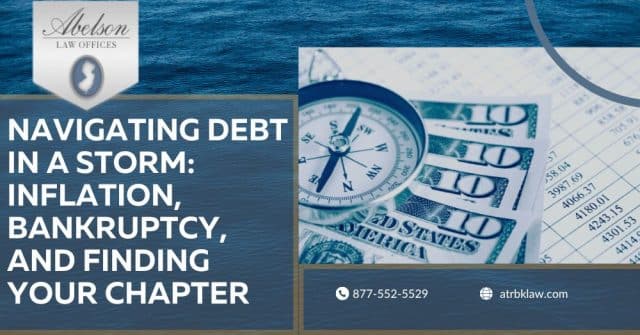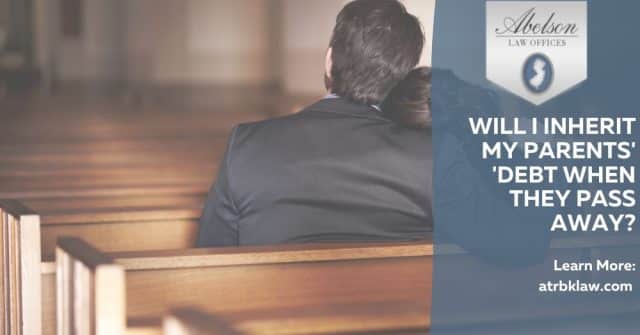A ritual of spring in America is about to begin. Tens of thousands of people will soon get their tax refunds, and when they do, they will finally be able to afford the thing they’ve thought about for months, if not years: bankruptcy.
It happens every tax season. With many more people suddenly able to pay a lawyer, the number of bankruptcy filings jumps way up in March, stays high in April, then declines.
For the past year, I’ve traveled the country trying to understand why bankruptcy often fails those it’s supposed to help. I analyzed millions of filings and interviewed dozens of judges, lawyers and people struggling with debt. The answer turns out to be simple: People are too broke to go bankrupt. Filing costs money, as does hiring an attorney, which is the best way to make sure you actually get debt relief.
Scores of people considering bankruptcy told me the same thing again and again: If they had $1,000 to pay an attorney, then they probably wouldn’t need to file in the first place. “It’s funny how you buy bankruptcy,” marveled Trina Wright of Memphis.
People who hire lawyers to help them file under Chapter 7 have their debts wiped away almost without fail, national filing data shows. And debtors with attorneys fare far better than those who go it alone, filing pro se. Studies show clear benefits for those who successfully wipe out their debts, from higher credit scores to higher incomes . Moreover, this sort of targeted relief can help buoy the broader economy .
Those who can’t afford attorneys often turn to bad options with predictably bad outcomes. Some try to wrangle the complicated bankruptcy forms on their own, risking costly mistakes. Others are lured by unregulated “petition preparers” who promise bankruptcy on the cheap. In Los Angeles, I found a whole industry of petition preparers who often flout bankruptcy laws because of a lack of enforcement.
In the South, debtors often avoid the up-front costs by filing bankruptcy under Chapter 13 . Unlike Chapter 7, which clears debts after a few months, Chapter 13 is a payment plan that usually lasts five years. Lawyers in the South will often start a Chapter 13 for $0 down, allowing their much larger fees (usually $3,000 to $4,000) to be paid through the plan. This provides immediate protection to low-income debtors, but most are unable to keep up with the payments. If they fall behind and their cases are dismissed, their debts return.
Faced with options like these, many people simply try to muddle through, often under the threat of having their wages seized by creditors.
Over the past decade, the number of consumer bankruptcies filed each year has ranged from about 800,000 to 1.5 million. That’s a small share of the millions of financially struggling households; researchers have long argued that many more people would benefit from filing. And while the reasons someone may or may not file for bankruptcy can be complex, it’s clear that an important ingredient is affordability.
So if attorney fees can determine whether, and how, someone declares bankruptcy, can anything be done about them? The good news, I found, is that the answer is yes. The bad news is that none of the fixes are easy.
In a Chapter 7 case, attorney fees, like any other debt, are wiped out. As a result, most bankruptcy lawyers require that clients pay in full before filing, because otherwise their bills would be erased, too. There’s ample evidence that people struggle to gather the money to do this. It’s what you’d expect in a country where nearly half of adults say that if they were hit with an emergency expense of $400, they wouldn’t have the cash on hand to cover it. Black Americans are particularly likely to have low savings, resulting in a variety of bad outcomes such as being unable to save up to file for bankruptcy.
A 2005 bankruptcy bill made the problem worse. In the name of preventing people from cheating their lenders, the bill heaped new requirements on debtors and their lawyers. The scope of such abuses was questionable, but the burdens of the new requirements drove up attorney fees nationwide by about 50 percent . The average attorney fee for a Chapter 7 today tops $1,100, with court fees adding $335 more. The result? Fewer filings, especially by low-income people.
The cleanest solution would be to change the law to allow more flexibility in how debtors pay their lawyers in Chapter 7 cases. That’s an idea with broad support among bankruptcy judges, and Sen. Elizabeth Warren (D-Mass.), a bankruptcy scholar herself, told me she thought it’s a needed reform. But the near-term prospects for legislation in Congress are, to say the least, unclear.
In the interim, there are some lawyers who try workarounds: One of the oldest is for clients to hand over a stack of postdated checks before filing for Chapter 7. After the case is filed, these checks are deposited over several months, resulting in a jerry-rigged installment plan. Most judges have decided that arrangement violates the law, but not all.
In the Southern District of Alabama, the chief bankruptcy judge, Henry Callaway, is working on a different fix. Troubled by the fact that more than 70 percent of bankruptcies in the district are under Chapter 13, he’s drafting a rule that would allow lawyers to break their fees into two parts for a Chapter 7 filing instead. The first would cover services rendered before the bankruptcy petition is filed; the second, services afterward. Because the second agreement is signed after the petition, it has a different legal status and isn’t wiped out like other debts.
It is, to be sure, a convoluted arrangement. But some judges consider it legal, including a federal appellate court and bankruptcy judges in Florida and Michigan , and more and more attorneys are trying it all over the country. Typically, the first agreement is for $0, and the client pays the full fee through the second agreement in installments. (Unlike in a Chapter 13 case, where debt relief is conditioned on completing a payment plan, this would give clients relief and then allow payments to lawyers over time.) This can be a salvation for people who wouldn’t be able to file for bankruptcy otherwise, but there are pitfalls: Attorneys are often tempted to raise their fees. Sometimes that’s because of uncertainty that they’ll be paid in full. Other times, it’s to cover the cost of hiring outside companies that facilitate these arrangements.
Compared with these complicated maneuvers, another solution to the problem of attorney fees seems blessedly simple: Find a way to make legal help with bankruptcies free. But civil legal aid organizations, which are the main source of this kind of assistance, are also financially strapped.
“We don’t have enough resources to provide bankruptcy services in all of our counties,” said Steven McGarrity, executive director of Community Legal Aid , which serves clients in central northeast Ohio.
This year, his group, along with legal-services organizations in 11 other states, will begin using a new tool called Upsolve to help more poor debtors file. Developed by a nonprofit in New York, Upsolve is a kind of TurboTax for bankruptcy, walking debtors through the process of gathering the necessary documentation and asking questions in plain language. The software populates the small stack of forms necessary to file, and then a lawyer reviews them. Cases are filed pro se, but if complications arise, the debtor can get help from the lawyer.
Perhaps in the future, free help will be available to all who need it. Or maybe Congress will rewrite the law to allow debtors to pay attorneys over time. In the meantime, people struggling with debt will keep on doing what they’ve always done: waiting and hoping for relief.
By Paul Kiel
Paul Kiel covers business and consumer finance for ProPublica.
Courtesy of the Washington Post, 3/1/18




